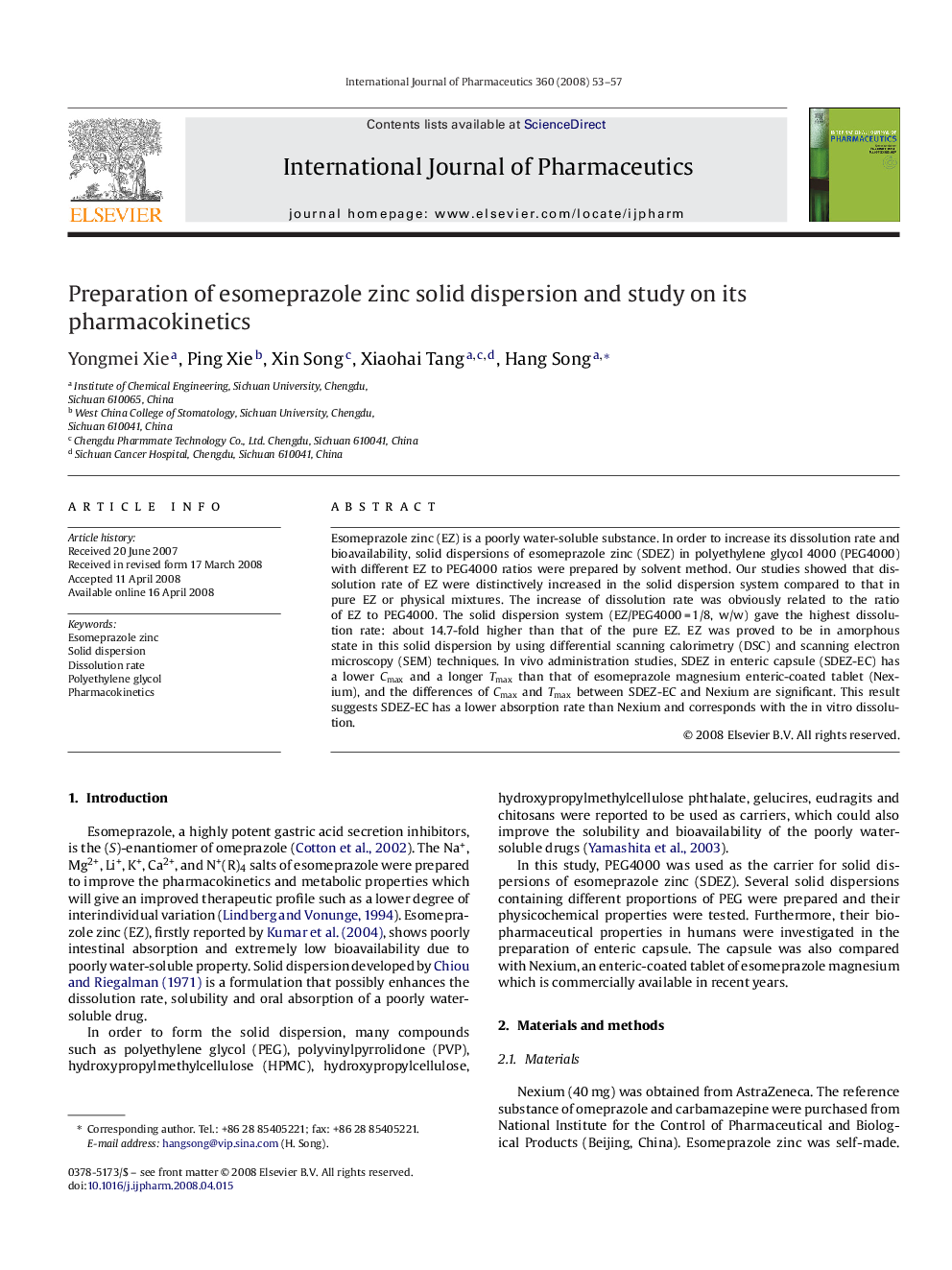| Article ID | Journal | Published Year | Pages | File Type |
|---|---|---|---|---|
| 2505093 | International Journal of Pharmaceutics | 2008 | 5 Pages |
Esomeprazole zinc (EZ) is a poorly water-soluble substance. In order to increase its dissolution rate and bioavailability, solid dispersions of esomeprazole zinc (SDEZ) in polyethylene glycol 4000 (PEG4000) with different EZ to PEG4000 ratios were prepared by solvent method. Our studies showed that dissolution rate of EZ were distinctively increased in the solid dispersion system compared to that in pure EZ or physical mixtures. The increase of dissolution rate was obviously related to the ratio of EZ to PEG4000. The solid dispersion system (EZ/PEG4000 = 1/8, w/w) gave the highest dissolution rate: about 14.7-fold higher than that of the pure EZ. EZ was proved to be in amorphous state in this solid dispersion by using differential scanning calorimetry (DSC) and scanning electron microscopy (SEM) techniques. In vivo administration studies, SDEZ in enteric capsule (SDEZ-EC) has a lower Cmax and a longer Tmax than that of esomeprazole magnesium enteric-coated tablet (Nexium), and the differences of Cmax and Tmax between SDEZ-EC and Nexium are significant. This result suggests SDEZ-EC has a lower absorption rate than Nexium and corresponds with the in vitro dissolution.
